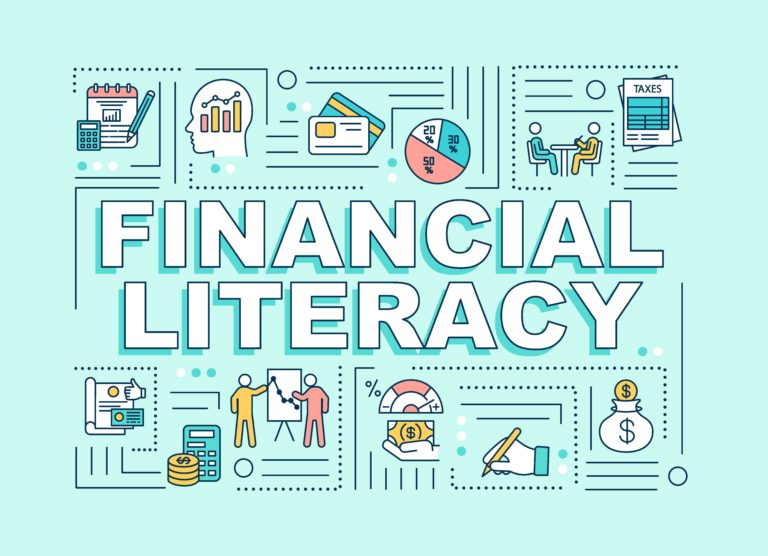Personal finance is a reality for every person, from high school students, first year college students, to working adults. Understanding how personal finance works is important to financial literacy and for both individuals and families. For this reason, teaching financial literacy is vital to the growth of the individual and the sustainability to working and high functioning adults.
To understand this importance, it is crucial that students and adults first know what financial literacy is and why it is important to teach it. Having a keen understanding of financial literacy can set up a path for success for families and for future leaders in organizations.
What is Financial Literacy?
Understanding what financial literacy is helps build self-confidence in individuals and helps with planning for the future. For the modern individual, the circumstances around the need to comprehend and master finances continues to grow. The term financial literacy represents knowing a range of skills and concepts that contribute to a person’s financial success. This can include topics such as debit and credit cards, credit reports, college financial aid, mortgages and more. Financial literacy comes from having the skills and ability to budget, invest, and facilitate personal financial management decisions.
Importance of Teaching Financial Literacy
Financial literacy is important for current money habits and also future preparation. The lack of financial literacy skills can lead to poor spending choices, increased debt, and a generational wealth gap. Learning to be financial literate has immediate results and also long term returns on investment.
Today’s students live in a world that has the benefits of technology, instant access to information, and the ability to communicate and advocate through different platforms. For students to be productive and engaging citizens, financial literacy will help with future decisions and set the foundation for personal responsibility and business skills.
Strategies and Activities for Teaching Financial Literacy
Focus on Teaching Concepts
For the student new to financial literacy, there can be a feeling of being overwhelmed and confused. When it comes to teaching financial literacy, it is important to break down information by concepts. Learning financial literacy can start as early as middle school. However, high school is a fundamental place to learn about financial literacy.
During high school, students begin their first jobs, have new responsibilities such as learning how to drive, applying for college, and picking future career paths. Teaching effective financial literacy for high school students can prepare a young adult for a life of financial discipline and maximizing financial and educational investments.
Make Finances Personal
The reality is: finances are personal. Often, high school students will see only what is important to them presently, but may have difficulty planning ahead for the future and for personal goals. One strategy to make teaching financial literacy relevant is to allow students to learn the basics of personal finance but also find scenarios and real world situations that apply directly to them. This could include games, role playing, or a classroom discussion that focuses on the realities of paying rent, owning property, and saving and investing.
Teaching students the 7 Baby Steps to personal finance created by Dave Ramsey is a quick and simple guide to planning finances. When teaching financial literacy, it is important to allow students multiple platforms and choices when learning how personal financial literacy is specific to their lives. There are multiple financial literacy games and interactive activities that can show students the realities of personal finance.
Help Students Plan Ahead
For high school students, time management and planning ahead becomes more important. When teaching financial literacy skills, one focus should be on planning and preparing for future finances. This includes creating a budget, paying yourself first with a savings account, obtaining a credit report, and investing in the future.
An example of teaching these financial literacy skills would be having a lesson on creating a personal budget or budget for a specific business. Teaching the concept of investing in the future could translate into teaching students about retirement savings accounts such as a 401(k) or 457(b). Students could do a research project that investigates which companies either currently or in the future they want to be involved with. These students could learn whether the company has a retirement savings plan or any stocks.
Expose Students to Resources
When teaching high school students financial literacy, it is important to keep lessons and activities relevant. Just as general curriculums such as English, science, math, and social studies lessons are enhanced by real, relevant, and student-centered activities, the same is true for financial literacy. This can be done by giving students access to resources to learn more about financial literacy. For students who want to learn lessons and do practice activities in the area of personal finance, The Khan Academy is a great resource.
Other students and teachers may prefer conversations and brief videos on real world examples. Dave Ramsey’s podcast and talk show covers a wide variety of topics including retirement plans, savings accounts, investing in stocks, and real estate.
Teaching financial literacy is beneficial to a student’s adulthood and to increasing opportunities for future homeowners, business leaders, and productive citizens. Expanding students’ knowledge and resource base allows for continued growth in financial literacy skills and real world applications.




